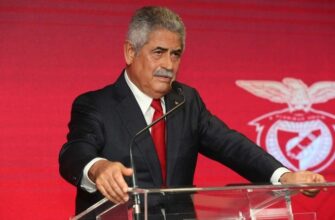On a sweltering Saturday in Kansas City, the routine rhythm of professional soccer was abruptly interrupted. A highly anticipated NWSL match between the Kansas City Current and the Orlando Pride, slated for an afternoon kickoff, found itself in a prolonged standoff with an invisible, yet formidable, opponent: extreme heat. This extraordinary delay, stretching nearly three and a half hours, transcended a mere scheduling hiccup; it became a real-world test of a rarely invoked policy, highlighting the evolving challenges sports leagues face in an era of escalating global temperatures.
When Protocols Meet Reality: The Kansas City Conundrum
The National Women`s Soccer League (NWSL) has, like many modern sports organizations, developed robust protocols to safeguard athlete well-being. Their extreme heat policy is a meticulously crafted framework, designed to quantify risk with scientific precision. The linchpin of this policy is the Wet Bulb Globe Temperature (WBGT) reading – a comprehensive measure that accounts for air temperature, humidity, wind speed, and solar radiation. It`s a far more accurate gauge of thermal stress than a simple thermometer.
According to NWSL regulations, an extreme heat delay is triggered when the air temperature exceeds 90 degrees Fahrenheit and the National Weather Service issues a relevant advisory. The crucial WBGT readings then commence: 60 minutes before kickoff, and if the reading is above 92.3 degrees Fahrenheit, the league is alerted. Forty-five minutes prior, if the reading remains stubbornly above that threshold, the delay officially begins. Subsequent readings are taken every 30 minutes, with play only resuming when the WBGT dips to 91.3 degrees Fahrenheit, and critically, only with the collective agreement of officials, medical personnel, and team staff. It`s a system built on empirical data, designed to remove subjective judgment from life-or-death decisions.
The Unforeseen Complications: A Scientific Protocol Meets Messy Reality
The NWSL`s commitment to safety, however, encountered a rather human-sized snag: its implementation on game day. Unlike Major League Soccer, which has occasionally shifted kickoff times for heat, often deciding the day before, the NWSL`s policy mandated real-time, on-site data collection. This meant that teams and fans, ready for a 3 p.m. start, experienced a stop-start afternoon, with multiple near-kickoffs before further delays were announced. The scientific rigor, in this instance, inadvertently created logistical chaos.
Reactions from those directly involved underscored the frustration. Current captain Lo`eau LaBonta candidly addressed the crowd, stating, “Nobody, especially the players, are happy right now.” Orlando Pride head coach Seb Hines echoed this sentiment post-match, describing the situation as “brutal” and lamenting a “lack of communication” that added to the confusion. He articulated a simple, yet profound, desire for proactive decision-making: “We would have liked that decision to have been made earlier on, before warm-up, so they can probably prep a little bit better.” Even after the eventual 6:28 p.m. kickoff, the heat`s lingering presence was undeniable. Current coach Vlatko Andonovski observed that the game became a “little more methodical, a little more of a chess match,” as players struggled to maintain intensity for extended periods. The irony was palpable: a precise, scientific protocol applied with meticulous care, yet its real-world application created an entirely different kind of challenge.
The Broader Context: Sports in a Warming World
The NWSL`s experience is not an isolated incident but a harbinger of challenges likely to become more common. While other competitions, such as the FIFA Club World Cup, have seen matches played in temperatures exceeding 90 degrees Fahrenheit without heat-related delays (though lightning can certainly halt play), the NWSL`s detailed, WBGT-driven approach sets a high standard for athlete welfare. This isn`t just about avoiding heatstroke; it`s about optimizing performance and protecting careers in increasingly strenuous conditions.
As global temperatures continue their upward trajectory, sports leagues worldwide will face increasingly difficult decisions. The Kansas City Current vs. Orlando Pride delay serves as a vital case study, illustrating the delicate balance between competitive integrity, fan experience, and, most importantly, player safety. It underscores the necessity for policies that are not only scientifically sound but also pragmatically implementable, perhaps incorporating earlier decision-making windows or greater flexibility in scheduling.
Looking Ahead: Adapting to the New Normal
The NWSL`s policy, cemented in its new collective bargaining agreement, represents a progressive step towards prioritizing athlete health. However, the Kansas City incident vividly demonstrated that even the most well-intentioned rules can encounter friction in the unpredictable crucible of live sports. The future of professional sports in extreme climates will likely necessitate a multi-faceted approach:
- Proactive Scheduling: Shifting games to cooler parts of the day or year where possible.
- Advanced Monitoring: Real-time, localized environmental data that informs decisions further in advance.
- Enhanced Communication: Clear, timely updates for teams, staff, and fans to minimize disruption and frustration.
- Adaptive Infrastructure: Consideration for shaded areas, cooling zones, and improved ventilation in venues.
The game ultimately went on, ending in a 0-0 draw, a testament to the players` endurance even in sub-optimal conditions. But the real story wasn`t just the score; it was the league`s unwavering commitment to its players, tested under the relentless summer sun. The Kansas City delay was more than an inconvenience; it was a valuable, albeit uncomfortable, lesson in the evolving intersection of elite athletics, environmental realities, and the precise, sometimes messy, application of scientific principles.






